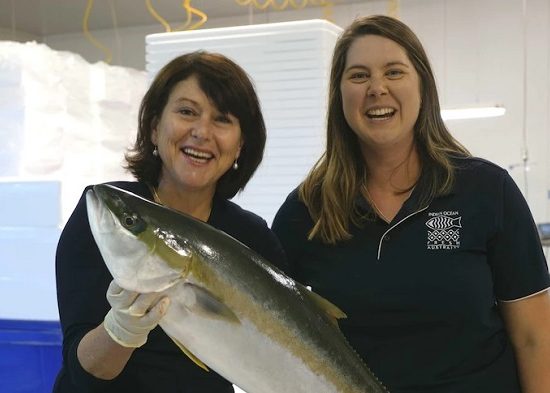
By Ben O'Rourke
September 20, 2021
The spotting of four Chinese People’s Liberation Army Navy (PLAN) ships 46 miles off the coast of Alaska at the end of August was a surprise for many when landing on newspaper headlines last week. The vessels were inside the United States’s exclusive economic zone but still within international waters.
According to Arctic Today, the Chinese boats were “conducting military and surveillance operations.” It’s unclear exactly what the focus of those operations was but a guided-missile cruiser and missile destroyer were part of the convoy.
By most accounts, the Chinese were there as a direct result of an increase in Western navy patrols in the South China Sea, which began more than a decade ago under the previous Democratic-led U.S. federal government.
Barack Obama ran for the presidency on a promise to end wars and heal the world – in a nutshell. The pledge won him a Nobel Peace Prize before he’d even done anything.
When it came to foreign policy, he actually stirred up new conflicts in the Middle East and North Africa, while at the same time top diplomat Hillary Clinton shifted the focus further East with her “pivot to Asia” agenda.
Effectively, the plan was to rein in China, a nation and communist government where economic development had surpassed everyone’s expectations and the West was too distracted by wars in Iraq and Afghanistan to even notice. The ‘pivot’ included a promise to re-open a base in the Philippines, forge military ties with former enemy Vietnam, and plant missile systems in South Korea, although the missiles were supposedly placed there as a deterrent against attacks by the North.
The U.S. was also joined by allies Australia and the United Kingdom in threatening more patrols after Beijing began developing islands and atolls in the South China Sea, some of which were claimed by the Philippines and other neighboring nations. Being a vital trade route was the British excuse for sending ships, including its new Queen Elizabeth class aircraft carrier.

This trilateral force is now calling itself Aukus, presumably because acronyms beginning with ‘u’ are difficult to pronounce. Last week Washington promised to share nuclear submarine technology with the other two countries, which have both added submarines to their list of vessels that will patrol the region. Australia swiftly scrapped a deal to buy submarines from France, enraging Paris.
Only days before the Alaska encounter, a U.S. Navy destroyer sailed through the Spratly Islands, which, besides China, are claimed by the Philippines, Malaysia, Vietnam, and Brunei. Currently, the islands are under the control of Manila, which has been stepping up security of areas within its waters believed to hold unknown quantities of oil. Beijing has tried to push joint surveys of disputed seabeds in a bid to cozy up to Manila and tap into natural resources.
Japan has also been trying to sweet-talk Southeast Asia by supplying the coast guard boats to the Filipinos and signing a regional sea defense deal with Vietnam. Individually, outsiders view the countries with interests in the South China Sea as weak and crying out for support. When they join forces at ASEAN (Association of Southeast Asian Nations) summits, however, they often sign off on whatever China wants, usually won over by Beijing’s billions.
It’s unlikely any serious conflict will play out in the region. Both sides (China and everyone else) are sticking to well-defined propaganda patterns, which is ultimately why the Chinese boats were off the coast of Alaska in Arctic waters recently.
This northern arrival was the first time since 2015 Chinese boats traveled through the Bering Sea, another strategic shipping route. The U.S. Coast Guard described its interactions with the Chinese crews as “safe and professional” for an unplanned encounter.
“Security in the Bering Sea and the Arctic is homeland security,” said Coast Guard Pacific Area Commander Michael McAllister. “The U.S. Coast Guard is continuously present in this important region to uphold American interests and protect U.S. economic prosperity.”
Russian drills happen in the sea regularly but Moscow usually tells the Americans beforehand. Earlier this month, maneuvers involving 8,500 Russian military personnel and 50 ships were held and nobody really paid much attention to them. According to the Russian news agency Interfax, representatives from the U.S., Norwegian, British and Finnish navies were monitoring the exercises.
Besides the South China Sea, there’s the percolating unease in Taiwan, which Joe Biden’s administration looks set to aggravate again. Taipei has apparently asked the White House for permission to change the name of its representation in the capital from Taipei Economic and Cultural Representative Office to Taiwan Representative Office.
According to the South China Morning Post, Biden’s team is considering the change, which would go against the one-China policy and anger Beijing. The consequences of the move could result in more and closer mainland patrols and military drills around Taiwan. The newspaper quoted the defense department as saying 25 People’s Liberation Army planes entered the island’s “air defense identification zone” during drills earlier this month. Beijing said there were only 10.
 Ben O’Rourke recently joined the Alaska Politics & Elections team. Ben has more than 25 years of media experience in radio, television, online, and newspapers working globally in Hong Kong, Singapore, Australia, and the United Kingdom. He accidentally landed into news journalism in 2003 and has been writing, reporting, and producing videos and nightly news programs for Hong Kong television and South China Morning Post ever since. He’s currently a freelance news editor at Fieldsports Britain, a popular hunting, shooting, and fishing channel on YouTube. Ben spent three weeks in Alaska filming a documentary and that time had a profound effect on him and it quickly became his favorite U.S. state.
Ben O’Rourke recently joined the Alaska Politics & Elections team. Ben has more than 25 years of media experience in radio, television, online, and newspapers working globally in Hong Kong, Singapore, Australia, and the United Kingdom. He accidentally landed into news journalism in 2003 and has been writing, reporting, and producing videos and nightly news programs for Hong Kong television and South China Morning Post ever since. He’s currently a freelance news editor at Fieldsports Britain, a popular hunting, shooting, and fishing channel on YouTube. Ben spent three weeks in Alaska filming a documentary and that time had a profound effect on him and it quickly became his favorite U.S. state.











